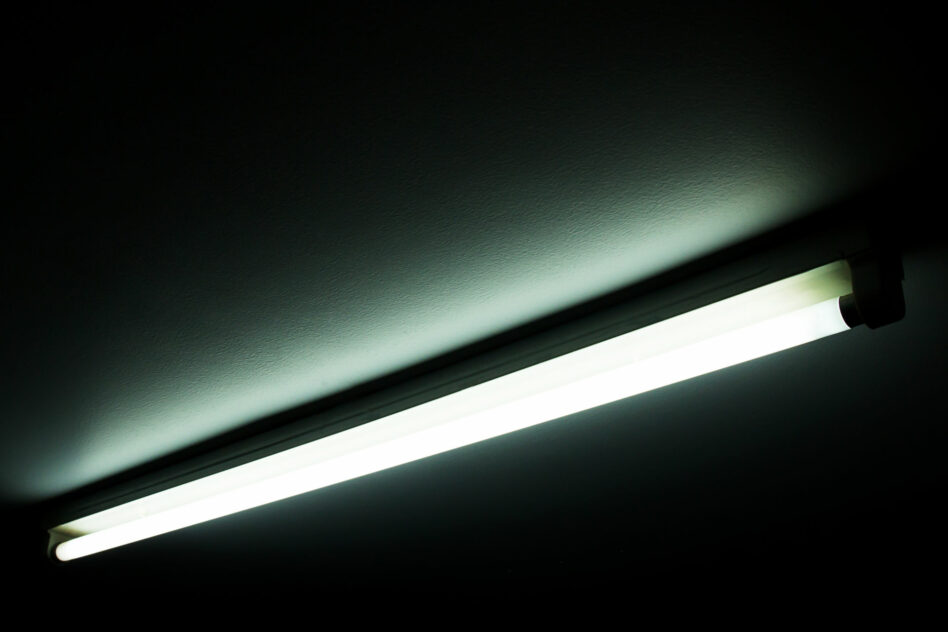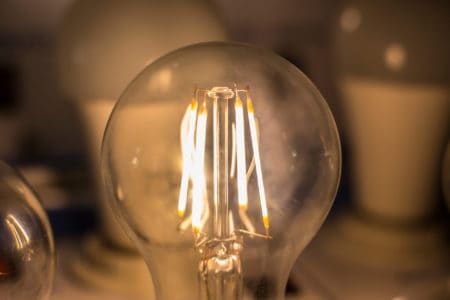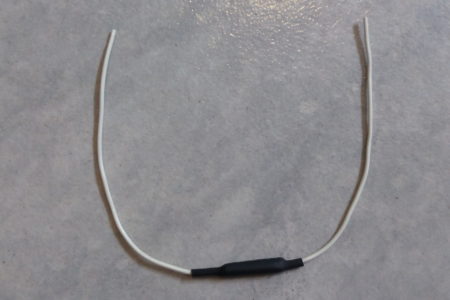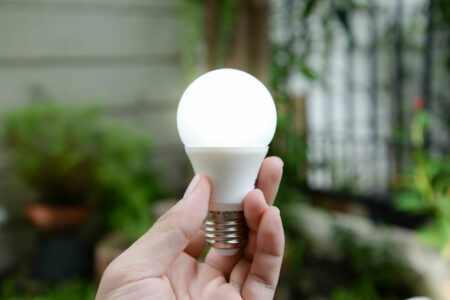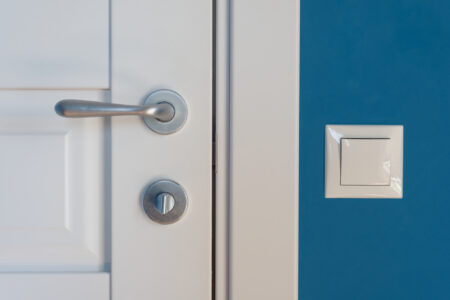T8 bulbs are one of the most—if not the most—prevalent light sources, thanks to being energy efficient and having a long-lasting performance. But what is a T8 bulb? Continue reading this article to learn more about the lamp’s features and uses.
What Is a T8 Bulb?
In short, a T8 bulb is either a fluorescent or LED tubular bulb. The “T” is short for tube, while “8” refers to the diameter in eighths of an inch. So, the T8 diameter is eight eights, which is just a complicated way to say one inch.
Tubular lamps are available with single- or bi-pin bases that plug into the appropriate fixture sockets. That makes them convenient since you can upgrade your lights without changing the lighting sockets.
What’s the Difference Between Fluorescent and LED T8 Bulbs?
Both lamps are tubes and have a one-inch diameter, but that’s about the only similarity between them.
Here’s a detailed explanation of the differences between T8 fluorescent and LED lamps:
Mercury Content
Fluorescent bulbs contain mercury gas, while LEDs don’t. Now, you might have heard that mercury lamps are hazardous and can lead to various health risks.
Mercury also isn’t environment-friendly. While that’s true to a great extent, fluorescent lamps are only dangerous when broken. That’s when the mercury gas escapes to the surrounding area and reaches you.
Plus, most modern fluorescent lights, like CFLs, contain a small amount of mercury, around four milligrams.
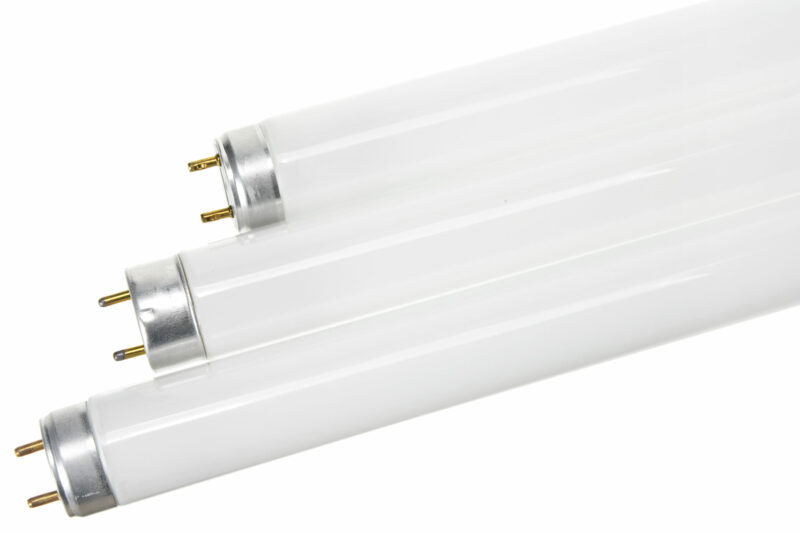
Why Do Fluorescent Lamps Need Mercury?
That’s to make the bulbs more energy-efficient. Fluorescent lamps produce light when electric current flows between two conductors (electrodes). Linking the two electrodes is mercury gas.
As the current flows, it excites mercury atoms, promoting the electrons from low to higher energy levels. However, excited electrons are unstable; they soon lose that energy in the form of UV light to return to their normal state.
That radiation energy then transfers to a phosphor coating inside the fluorescent tube. As a result, the phosphor layer changes UV light into the visible light we see. Without mercury gas, more energy is needed to produce the same illumination.
LED lamps, on the other hand, don’t use mercury vapor. Instead, they operate through a microchip made of semiconducting material. It follows the same principle as fluorescent lamps.
When connected to electricity, electrons in the semiconducting material, the diode, jump to higher energy levels. Then, they move back to ground level, creating radiation.
As you can see, T8 LEDs are better than T8 fluorescent bulbs since they don’t contain toxic mercury gas.
Light Quality
Both lamps produce excellent light. However, T8 LED is slightly better than its fluorescent counterpart. The former lamp boasts a better color rendering index (CRI) than the latter, all thanks to how it operates.
For those who don’t know, CRI measures how natural the colors look under lamp lights compared to sunlight. The higher the CRI, the more vibrant and accurate the colors appear.
As mentioned earlier, fluorescent bulbs produce UV light, which is then transformed into visible light. Still, you need to understand that light is a spectrum. The lamp can emit some UV light into the mix.
Consequently, T8 fluorescents produce a discrete spectrum. Because of this, the lighting may appear blue.

LED lamps, on the other hand, produce a continuous spectrum with little UV or infrared radiation. That’s why the displayed objects might appear better under T8 LED lamps.
Additionally, fluorescent lamps’ light quality can get worse in cold weather. As the temperature drops, the lamps emit a faint light. You might also notice that they flicker and take a while to turn on.
That said, LED light is unidirectional. That means LEDs emit light and heat in one direction, usually downward. While that’s great for efficiency, it might make the room look smaller.
Sure, there are omnidirectional LED bulbs on the market. However, they’re usually pricey compared to regular T8 LED lamps.
In contrast, fluorescent lamps cast light not only downward but also toward the ceiling. That creates the illusion of a more spacious room. Unfortunately, this comes at the cost of wasted heat energy, making the fluorescent lamp less efficient.
Efficiency
T8 LED lamps win hands down in energy efficiency compared to fluorescent bulbs.
Aside from not wasting much heat energy, T8 LED bulbs use fewer watts to produce the same brightness. That’s something to keep in mind if you upgrade from fluorescent to LED lamps.
For instance, a 32-watt fluorescent lamp can produce between 1920 and 2500 lumens. The LED equivalent would be 17 watts, which yields around 2200 lumens.
The best part is that lower power consumption (wattage) means lower energy bills. So, not only do you get the same illumination as T8 fluorescent bulbs, but T8 LEDs also help you save a few bucks in the process!
What’s more, T8 LED lamps have a longer lifespan than fluorescent lights. The former can have an average lifetime of 50,000 hours or more!
Fluorescent lights, on the other hand, average around 30,000 hours. A longer life span of 40,000 is possible when you use a programmed start ballast. Still, T8 LED bulbs will generally last longer.
Uses
T8 bulbs make for great lamps in commercial and industrial settings. In general, fluorescent lights are more affordable than LED bulbs.
So, T8 fluorescent lamps might be suitable for spacious areas that don’t need over-the-top lights, like warehouses, manufacturing facilities, offices, hospitals, schools, or even your basement! Those lamps are also excellent for small rooms.
However, steer clear of installing fluorescent bulbs in places where you turn the light on and off frequently. That’s because continuous switching might cause the lamps to fail prematurely. Examples of such rooms include the laundry room, bathrooms, and kitchens.
LED T8 bulbs, on the other hand, are expensive. However, they last longer and don’t consume much electricity. Plus, they produce better light quality. All those perks make them great for almost any place.
You can install them in garages, basements, kitchens, bathrooms, and entryways, and rest assured they won’t flicker from frequent use. LED T8s are also excellent for displaying the accurate, vibrant colors of wall art, furniture, carpets, and even drapes.
In the end, it all boils down to your preference and what you want to achieve with the lighting.
